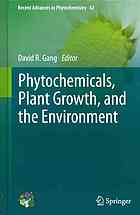

Most ebook files are in PDF format, so you can easily read them using various software such as Foxit Reader or directly on the Google Chrome browser.
Some ebook files are released by publishers in other formats such as .awz, .mobi, .epub, .fb2, etc. You may need to install specific software to read these formats on mobile/PC, such as Calibre.
Please read the tutorial at this link: https://ebookbell.com/faq
We offer FREE conversion to the popular formats you request; however, this may take some time. Therefore, right after payment, please email us, and we will try to provide the service as quickly as possible.
For some exceptional file formats or broken links (if any), please refrain from opening any disputes. Instead, email us first, and we will try to assist within a maximum of 6 hours.
EbookBell Team

4.3
88 reviewsThis is the second volume since the reintroduction of the Recent Advances in Phytochemistry (RAP) series, an annual journal supported by the Phytochemical Society of North America. Topics appropriate for RAP include the biosynthesis of natural products and regulation of metabolism, the ecology of specialized metabolites and the evolution of their pathways, and the effects of natural products or plants on human health. Research appropriate for RAP involves genomics, proteomics, metabolomics, natural product structural determination and new technology development, medicinal chemistry and metabolic engineering, or any of the myriad of fields that are now closely associated with what may be called “traditional phytochemistry” and plant biochemistry. The advent of post-genomics-based ways of thinking, of systems biology, of synthetic biology, of comparative genomics/ proteomics/ transcriptomics/ metabolomics and especially of the introduction and establishment of a mentality that leads to support of large collaborative projects, has opened up many new doors to scientists interested and versed in the (bio)chemistry of plants. The goal of RAP is to highlight these developments. Two main types of articles are printed in RAP: Perspectives and Communications. Perspectives in RAP are expected to synthesize results from the primary literature and perhaps from new/novel results and place these in perspective relative to the broader field. These articles may be similar to review articles, but also are intended to present important ideas and hypotheses, and may present proposals for interesting directions in the field. It is the hope of the Editorial Board that these articles will be of great value to a large audience. Communications are intended to represent new advances in the field that will be of interest to a large audience. Articles of both types are typically solicited from the Society membership based on the content of the annual meeting talks, but in keeping with the title “Recent Advances in Phytochemistry” the editorial board reserves the right to solicit additional Perspectives and/or Communications from non-attendees as well (e.g., where an editorial board member has knowledge of an interesting recent advancement that would be of general interest to the society membership). All submissions to RAP go through a rigorous peer review process, overseen by the Editorial Board, which includes external review. RAP is indexed with Springer published journals. All RAP papers are available not only in the published volume form, but also electronically through Springer’s online literature services. This marks a significant change from past volumes of RAP and it is the hope of the Editorial Board that this will lead to broader dissemination of the contents of and greater interest in RAP. This 42nd volume of RAP includes a total of seven articles, many, but not all, based on talks presented at the 50th annual meeting of the PSNA. As was seen in RAP volume 41, These seven Perspectives give a very good picture of the breadth of plant (bio)chemistry research in North America, which is also indicative of the state of the field worldwide. Each of these articles describes the integration of several different approaches to ask and then answer interesting questions regarding the function of interesting plant metabolites, either in the plant itself or in interactions with the environment (natural setting or human health application). Many of these Perspectives have a strong ecological focus. McCormick et al. review the discovery of the biosynthetic pathway leading to production of trichothecene mycotoxins such as the T-2 toxin in plant pathogenic and other fungi. These compounds play very important roles in plant-pathogen interaction, and are very significant from a human health perspective. In a complementary paper, Duringer et al. describe recent technological advances in monitoring mycotoxins such as ergovaline and lysergic acid in forage crops, using state of the art and highly sensitive mass spectrometric means. Gross reviews the current understanding of how infochemicals mediate interactions between plants and insects, and highlights how such knowledge can be used to mitigate crop losses by pests. Two Perspectives discuss how recent technological advances are making an impact on our understanding of the role of plant hormones in plant growth and development. Gouthu et al. outline highly sensitive methods for measurement of plant hormones in tissues such as developing grape berry. In contrast, McDowell and Gang outline how new transcriptional profiling techniques are shedding light on old questions, such as how rhizome development is regulated by different plant growth regulators. The last two Perspectives outline the role of biotechnology in modern plant biochemistry research. Makhzoum et al. review the long history of use of hairy roots and provide perspective on future utility of this tissue type in continuing to uncover mechanisms of plant natural product biosynthesis, among other apolications. Dalton et al. outline, on the other hand, recent efforts to produce non-native polymers of human interest in plants and outline many of the challenges associated with such investigations. We hope that you will find these Perspectives to be interesting, informative, and timely. It is our goal that RAP will act not only as the voice of the PSNA, but that it will serve as an authoritative, up-to-date resource that helps to set the gold standard for thought and research in fields related to plant biochemistry.